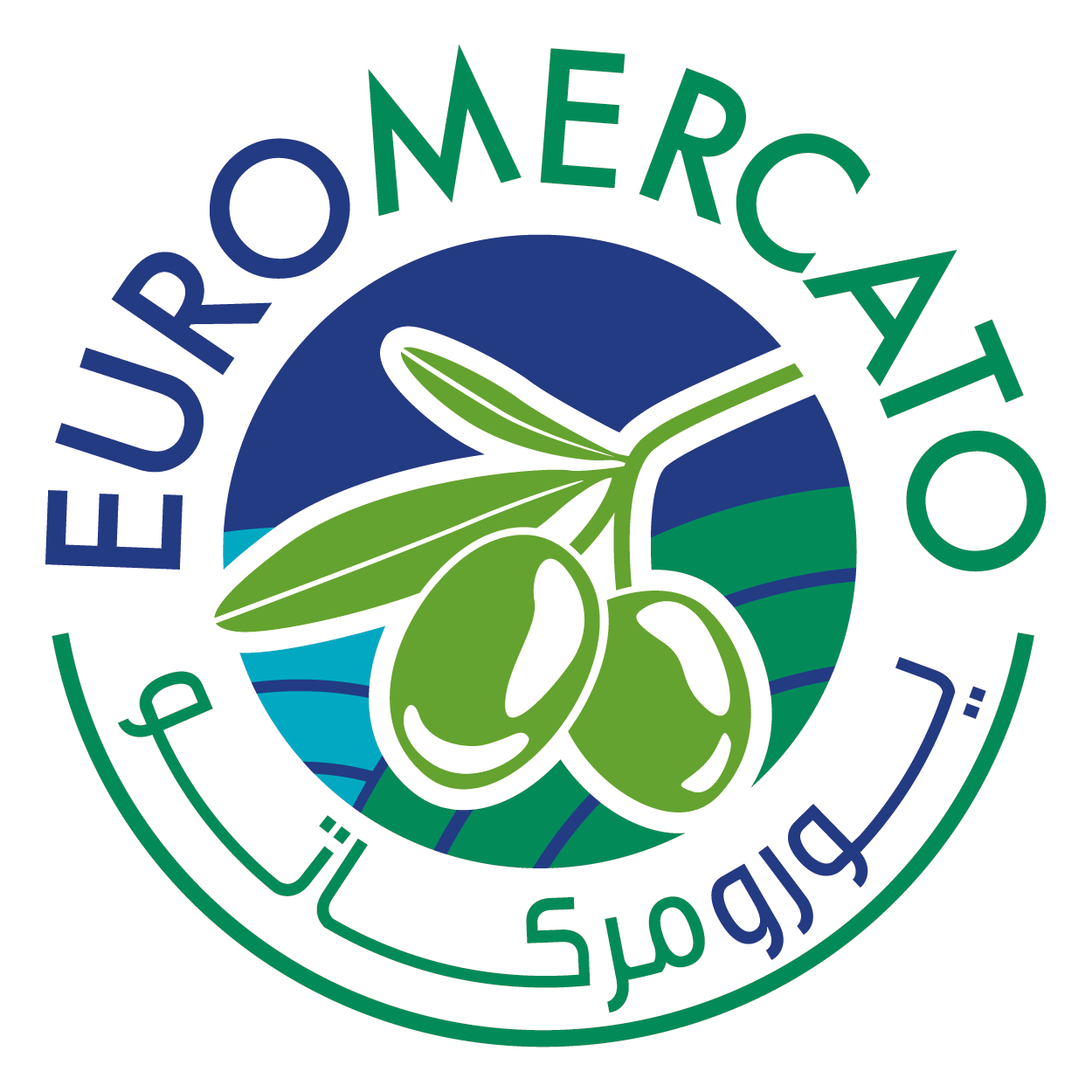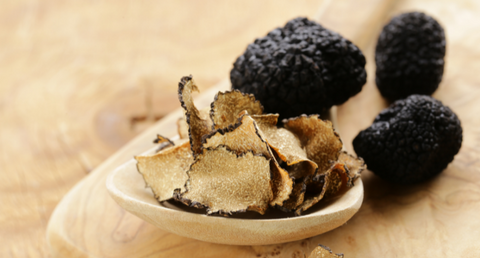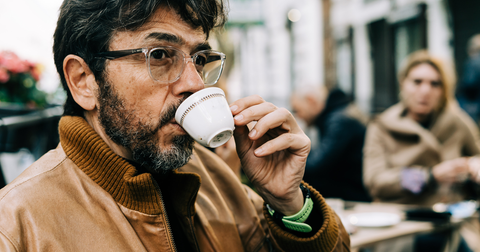Truffles, the luxury cousins of the mushroom, are a delectable food that people from all over the world enjoy. However, these fragrant fungi will come at a cost.
It is said that the truffle is the most valuable food on the planet. It is one that gives images of grandeur, extravagance, banquets, and anything fancy, and sometimes, it can even be intimidating.
But what exactly are truffles? Are they mushrooms? Maybe. What are they, and how do you eat them? Let’s find out more about what a truffle is. In this article you will find out:
- What are Truffles
- What Do Truffles Look Like
- The Types of Truffles
- Where Do You Find Truffles
- How Do You Hunt for Truffles
- How Do You Store Truffles
- What Do Truffles Taste Like
- Why are Truffles Expensive?
- How Do I Use Truffles in Cooking
- Where Can I Buy Truffles?
What are Truffles
Truffles can be said to be the most valuable food on the planet. It is a subterranean fungus that grows beneath oak and hazelnut trees. You’ve probably seen luxury truffle products in supermarkets or fine dining establishments, but the distinct truffle flavor you recognize may not be a real truffle at all. Cheap truffle oil has never been anywhere near a real truffle. Some less expensive truffle products contain 2,4-dithiapentane, a synthetic compound containing one (1) of the main aromatic components of foot odor, which gives it that “earthy” taste.
Truffles are related to mushrooms because of their reproductive fruiting or pore-bearing bodies. Like other types of mushrooms and naturally growing edible fungi, Truffles grow in abundance, but identifying a real truffle is difficult. A real truffle is seasonal, expensive, and has a short shelf life. Truffles are traditionally classified as belonging to the genera Tuber, Terfezia, and Leucangium, which are part of the Ascomycotina division of the Fungi kingdom. There are many species, over 140 in total, but only a small number of them have a real market value.
Truffles, which were traditionally a European product, were first grown in Australia in 1999 by Tasmanian Tim Terry. Since then, the truffle industry has expanded in Tasmania, Western Australia, South Australia, Victoria, the ACT, Queensland, and New South Wales.
What Do Truffles Look Like
While there are numerous truffle species, most people are familiar with the broad categories of black truffle and white truffle. Black truffle has a rough, granular exterior resembling solid dirt clumps. In comparison, their insides are far more appealing, resembling wagyu beef.
On the other hand, a white truffle has the appearance of a rough-skinned potato on the outside. While, on the inside, they exhibit the kind of marbled mushroom quality that you find in black truffle, albeit in a slightly different form.
The Types of Truffles
Truffles come in a variety of varieties. At least 40 species have been discovered, many of which are not edible, and new species have been found as recently as 2018.
Truffles are traditionally classified as belonging to the genera Tuber, Terfezia, and Leucangium, which are part of the Ascomycotina division of the Fungi kingdom. There are many species, over 140 in total, but only a small number of them have a real market value. Each species of truffle has a different monetary value. European species are typically more expensive than native species. The Italian white truffle is the pinnacle of this.
Truffles come in two varieties: white truffles and black truffles, and there are numerous species within each of these two (2) types.
White and black truffles are hunted at different times of the year. White truffles are harvested between September and December, while black winter truffles are harvested between December and February. The less valuable black truffles, on the other hand, are collected all year.
White truffles have historically been more expensive than black truffles due to their much stronger aroma and flavor. They’re typically served raw over dishes, whereas it is usually shaved over dishes.
Other cultivated varieties of truffle also include:
Winter Truffle
The Brumale truffle is also known as the black winter truffle. It is around November 1 and March 15 when they are gathered. It resembles the Périgord truffle so closely, both inside and out. This truffle has a very dark, almost black skin tone and is distinguished by small flat and globular warts. It has pale, marbling flesh with a tangle of clear-cut veins in two main colors: white and grey, and can range in size from 2 to 9 centimeters.
Summer Truffle
This truffle has a smooth surface and a white interior, and it is around May to September when hunters collect them. You can use the summer truffle in dishes such as doughs, meat and fish, pasta dishes, and numerous appetizers. They also go well in soups and salads of various kinds.
Burgundy Truffle
This truffle has a chocolatey smell and taste and is usually present in Dordogne between October 1 and December 31. It has pointed warts in the shape of a diamond, and the flesh is a chocolate-brown color. The Burgundy truffle grows under broad-leaved trees in clay soil. You can commonly use it in appetizers, meat and fish dishes, and even eggs. This is the most popular type of truffle after the Périgord truffle.
Bianchetto Truffle
Bianchetto truffle is usually around from January to April. This truffle is distinctive in the wild truffle world because it can be any of a wide range of colors, including brown, orange, tan, black, and everything in between. Color then is not a reliable indicator of freshness; as a result, instead of looking for a firm texture and a strong truffle aroma, look for a firm texture and a strong truffle aroma.
Oregon Black Truffle
Chefs absolutely love the Oregon black truffle, which has a strong odor and a flavor that is earthy, almost pineapple-like. It is from November to March when they are in season, and you can use them in a variety of dishes, including meat-based dishes and many desserts. Oregon black truffle has an aroma that fades with heat, so shave them raw over food rather than cooking them.
Oregon Brown Truffle
The Oregon brown truffle usually appears from October to March. Their truffle-like fruit bodies are roughly spherical, with lobes and furrows and typical dimensions of 12-60 millimeters. The peridium (outer “skin”) can be up to 2 millimeters thick and can range in color from light yellowish-brown to orange-brown to reddish-brown, with darker patches in maturity. The surface texture of the truffle is rough because its coverage is flat to rounded warts 0.5-3 millimeters wide; more prominent warts frequently have smaller warts on them.
Oregon White Truffle
When young, the Oregon white truffle is white on the outside and gradually turns orange-brown. They’re around from November through March. They vary in size, but they are generally small, ranging from the size of a pea to the size of a golf ball. This white truffle has great value due to its intense aroma. You can use it to infuse butter, oils, and meats and sliced, shaved, or grated over pasta, risotto, vegetables, or eggs.
White Piedmont Truffle
This type of truffle, also known as the Alba truffle, and it appears from October 1 to December 31, primarily in northern Italy. It has a wonderfully heady aroma and a smooth surface, but it is not white in color. The White Piedmont truffle is a creamy, café au lait color. You usually only eat it raw by shaving it over pasta and rice, whereas it has a garlicky, cheesy, and shalloty aroma.
Tuscan Truffle
The Tuscan truffle is available from January to April. The taste is quite sharp when eaten raw, and it has a distinct flavor when mixed with butter or oil. Truffle oil and truffle paste, among other things, frequently use the Tuscan truffle in their production
Chinese Black Truffle
Chinese black truffle comes in a variety of varieties and resembles Périgord truffle in appearance. However, the taste and texture of the truffle are usually rubbery, which is why they sell for such a small amount of money. Indeed, many experts claim that the Chinese black truffle has no more value than regular mushrooms.
Australian Truffle
Few types of truffles beat the Australian variety in terms of flavor and intensity. However, these are just some that you can buy for a more reasonable price. They are very similar to the truffles that are you can find in certain parts of France. The Australian truffle is available in the months of May, June, and July because their seasons are the polar opposite of many other countries where truffles can be found.
Not every truffle species is commercially available. In fact, the majority of them are unfamiliar to the average consumer. These lesser-known species that hunters collect from the wild frequently have an unreliable and inferior supply or an uncertain supply of those willing to hunt and gather them. Prices for species other than the Black Truffle tend to be lower in the global marketplace, but this often depends on its availability, quality, and location.
Where Do You Find Truffles
Truffles are always found in trees and not just any regular trees, but there is the right kind of trees. Certain truffle species thrive in tree farms. Under the ground, the truffle is simply the fruiting body, similar to an apple. Because truffles grow underground, they do not have access to sunlight to photosynthesize sugars; they require a host tree. We also have a lot of them, which we call mycelium; it has microscopic-level threads that can extend up to 100 meters in a teaspoon of soil. This mycelium actually attaches itself to the roots of a tree.
Trees host the truffle fungi; the fungi form a symbiotic relationship with the host tree, living on and around the tree roots. It extends the tree’s reach and takes nutrients and water, and passes them to the tree. In exchange, the tree provides sugar to aid in developing the truffles. Truffles produce a “brûlée,” a dead patch of grass around the trunk of a tree that indicates the presence of truffles underground.
These fungi can be seen all over the world, but they all need a specific climate to thrive. While the requirements for different varieties may differ slightly, one thing is sure. Truffles cannot exist without trees.
So, how do people cultivate truffles? Truffles can be farmed; it’s just that it’s not as simple as planting a seed. Truffles are stubborn and grow only in very specific conditions. For tree roots to grow, the soil must have a certain alkalinity and a certain concentration of tree roots.
To farm truffles, they inoculate a tree seed with the spore, then plant the said seed and let the tree grow. If everything goes well, truffles will begin to spawn beneath the tree. However, even when the conditions are ideal, there is no guarantee that truffles will thrive, and hunting them is a time-consuming process.
Farming is now mainly replacing hunting as the primary source of truffle these days. The cultivation of the world’s truffles consists of 70%, and there is a significant decrease in the number of wild truffles, which is a result of forest loss and climate change. A good truffle harvest can take up to six (6) years, and there is no assurance that the fungi will grow at all.
How Do You Hunt for Truffles
The correct verb for gathering truffles is hunting. Truffle hunting is a delicious version of hide and seek. Farmers rely on animals to sniff out the treasure because they hide underground.
Traditionally, hunters have been using ruffle dogs and pigs to hunt for truffles. These are simply animals that undergo training in order to detect odors such as the intense truffle aroma from underground. Initially, hunters have been using truffle pigs to sniff them out. But, while pigs are excellent at finding truffles, they are also excellent at eating them. Dogs are now a much more common truffle-hunting companion.
Farmers must still get down on their hands and knees to smell the dirt. Truffles do not ripen further once hunters separate them from their host trees. As a result, it is up to the farmers to determine whether the truffle is ready for picking.
The general rule in hunting truffle is that the better the truffle hunt, the worse the weather outside. Once you know where to look, you must sniff out and dig up each truffle by hand, which can be difficult. It may take some time but finding a good one can be worth the effort.
How Do You Store Truffles?
The truffle has a limited season. It frequently only appears for a few months out of the year. Even if you do manage to get your hands on them, they don’t last long, unlike a tomato, which you can cut from the vine and ripen on your windowsill. The clock starts ticking once the hunters extract the truffle from the ground. As a result, it will gradually deteriorate over time.
Truffles have an extremely short shelf life, which is about five to six days once you get them if they’re fresh and when you order them from a reliable source. That pungent truffle smell will be cut in half after only five (5) days out of the ground.
Your fresh truffles should be refrigerated and put in a closed container with a paper towel wrapped around them. The refrigeration helps keep the truffles fresher for a longer period of time. Keeping truffles in a closed container prevents oxidation and spoilage while also containing the aroma. Meanwhile, wrapping the truffles in a paper towel keeps them dry. Wet truffles are unappealing and will rot quickly.
To keep your truffles fresh, store them in whole chicken eggs, cheese, animal fat, or anything else containing fat, in which all of these foods can be “truffle-ized” by the truffle aroma.
What Do Truffles Taste Like
It isn’t easy to describe the flavor of a truffle, but most people describe it as nutty, earthy, meaty, oaky, and musky. Despite the strong aroma, the flavor of a truffle is quite subtle. It’s very light and fragrant and tastes much better than it smells. It’s similar to a mushroom but with a meatier bite.
Truffle is a natural glutamate, which means they’re high in umami. To say they have a “mushroomy” flavor is an understatement. It’s like an uber mushroom with blue cheese, garlic, and an addictive “savouriness.”
Black truffles have that chocolatey note, whereas white truffles are slightly more aromatic, with flavors and aromas that can be similar to garlic or shallots. They are firm, compact, and spongey in texture.
Truffles from different parts of the world will have subtly different flavors and aromas due to the unique environment where each one grows. These environments include the specific properties of the soil, the types of trees they thrive in, and the season in which hunters harvest them.
Why are Truffles Expensive
The reason for the high prices is the scarcity of the produce; truffles are seasonal, extremely difficult to grow, and require many years to cultivate. They also have a relatively short shelf life. When you think about it, the exorbitant price of truffles isn’t all that outlandish. The difficult farming techniques and collection methods used for truffles, the trained animals used in truffle hunting, and the sheer rarity of finding the right conditions for these truffles to thrive in must be taken into consideration why the truffle is costly. The quick turnaround time and logistics required to ensure your truffles do not spoil in the short period of time before they arrive at your doorstep must also be taken into consideration.
How Do I Use Truffles in Cooking
There are several types of edible truffles, including white truffle, black truffle, summer or burgundy truffle, garlic truffle, and a few other species of fungi that we can refer to as truffle. They’re a hot culinary commodity, but people use them sparingly due to their high price and strong but magnificent taste. In general, truffles have the most flavor when they are at room temperature.
If you’re using white truffles, don’t cook or heat them. They’re incredibly delicate. The white truffle is best when you serve it shaved atop a dish with a sharp knife, a mandolin, a truffle grater, or something similar to a micro plane or rasp grid. Remember that heating white truffles cause them to lose their flavor.
Black truffles, on the other hand, are delicate if lightly cooked. Black truffles have a milder flavor than aromatic white truffles. People tend to use this truffle to make truffle salt and truffle honey, the most magical salts and honey ever created. Truffle oil comes in close, though most truffle oils do not contain truffles and are instead olive oil with artificial truffle flavor.
Truffles bind to fat just like any other aromatic ingredient. Consider cheese, milk, cream, eggs, and even ice cream. Remember that anything containing fat can become truffle-ized.
Warm creamy flavors go well together: scrambled eggs, pasta with buttery sauces, risotto, and lobster. They’re best to serve truffles is to simply shave it over or dice it thinly and sprinkle it on salads, pasta, meats, and cheeses, and a little goes a long way.
Where Can I Buy Truffles
Fresh truffles can be challenging to find, both because they are inherently rare and because they are so perishable. We can buy fresh truffles by the ounces online from a few companies. However, their availability is limited and seasonal, and purchasing from them typically necessitates paying for overnight or two-day shipping, which adds to the already high cost.
If you’re looking for truffle flavors, then look no further because we have just the thing. Euromercato has a wide variety of truffle selections. From oil to spreads to sauces, they got you covered. You can check them out here.
Truffles aren’t something you eat; they’re something you experience. When you use them in cuisines, you add them to enhance what you’re eating, so it’s all about aroma. They enhance the complexity, ethereality, and wonder of any dish.














